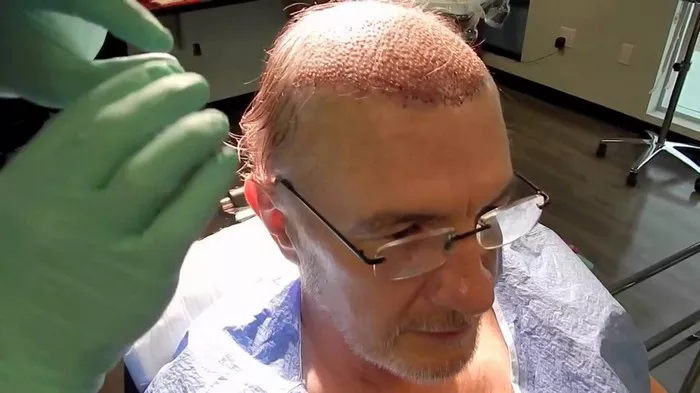Hair transplantation is a significant decision for individuals seeking to restore their natural hairline and regain confidence in their appearance. The process involves meticulous surgical procedures and a period of post-operative care and recovery. As patients embark on their journey toward fuller, thicker hair, it’s essential to understand what to expect at various stages of the healing process. Two months post-transplantation mark a pivotal point where patients may begin to witness initial signs of progress. In this article, we delve into the developments, challenges, and patient experiences encountered at this juncture.
New Hair Growth:
Two months post-hair transplant, patients may eagerly anticipate signs of new hair growth. However, it’s crucial to manage expectations as visible progress varies among individuals. The extent of growth depends on factors such as the type of transplant performed (Follicular Unit Transplantation – FUT or Follicular Unit Extraction – FUE) and the unique healing processes of each patient.
While some individuals may notice early signs of regrowth, others may experience a more gradual transformation. It’s essential to recognize that additional treatments, such as Finasteride, Minoxidil, or Platelet-Rich Plasma (PRP) therapy, can influence the pace and quality of results. These adjunctive therapies work synergistically to support and enhance the growth of transplanted hair follicles.
Real Patient Examples:
At the two-month mark, visible hair growth may be minimal, but this is entirely normal. Patients should not be discouraged if significant changes are not immediately apparent. The new hairline may start to emerge faintly, signaling the beginning of a transformative journey.
It’s essential to manage expectations and remind patients that the implanted follicles are still in the early stages of development. Patience is key as the transplanted hairs undergo the natural growth cycle, gradually thickening and maturing over time.
Side Effects and Healing:
During the initial two months post-transplantation, patients may experience common side effects such as redness, swelling, and scabbing in the recipient area. These temporary effects are part of the body’s natural healing response and should gradually diminish as the healing process progresses.
Most post-transplant shedding, known as shock loss, occurs within the first month following the procedure. By the two-month mark, patients should notice a reduction in shedding as the transplanted follicles transition into the growth phase.
Donor Area and Scar:
The condition of the donor area, particularly for FUT (strip method) patients, is an important aspect of the post-transplant evaluation. At two months post-transplant, thinning may still be present in the donor area, but it is typically inconspicuous and easily concealed.
For FUT patients, the donor scar will continue to shrink and fade during this period, gradually becoming less noticeable over time. Proper care and adherence to post-operative instructions can aid in the optimal healing of the donor area.
Lifestyle and Healing:
A holistic approach to healing and recovery is essential for maximizing the success of a hair transplant procedure. Encouraging patients to adopt a healthy lifestyle with emphasis on proper nutrition and regular exercise can promote overall well-being and enhance the body’s ability to heal.
It’s crucial to educate patients about the importance of avoiding alcohol during the recovery phase, as it can interfere with the body’s natural healing processes and potentially compromise the results of the transplant.
In conclusion, the two-month milestone post-hair transplant marks a significant stage in the journey toward restored hair growth and confidence. While visible changes may be subtle at this point, patients can take comfort in knowing that progress is underway. By understanding the developments, managing expectations, and adhering to post-operative care guidelines, patients can navigate the recovery process with confidence and look forward to continued improvements in the months ahead.
FAQs
1. What happens after 3 months of hair transplant?
After 3 months of a hair transplant, you may start noticing significant improvements in hair growth. At this stage, the transplanted hair follicles have settled into their new location and begun the process of producing new hair. While individual results may vary, many patients experience a noticeable increase in hair density and coverage, leading to a more aesthetically pleasing appearance. It’s important to continue following post-transplant care instructions provided by your surgeon to ensure optimal healing and hair growth.
2. How much hair will grow in 2 months?
Within 2 months post-transplant, you may observe initial signs of hair growth. However, it’s essential to understand that hair growth rates vary among individuals and depend on factors such as genetics, overall health, and adherence to post-operative care. While some patients may experience noticeable hair growth within this timeframe, others may require more time to see significant results. Patience is key, as the full effects of a hair transplant typically become more apparent over several months.
3. Are grafts secure after 2 months?
By the two-month mark, the transplanted hair grafts have usually become firmly anchored in the recipient area. While they may still be fragile to some extent, they are generally secure enough to withstand normal activities such as washing and styling. However, it’s essential to handle the transplanted area with care and avoid any rough or excessive manipulation that could disrupt the healing process. Following your surgeon’s instructions regarding post-operative care and avoiding activities that could jeopardize graft survival is crucial during this stage of recovery.
4. How long until a hair transplant looks normal?
The timeframe for a hair transplant to look completely normal varies from person to person. While some individuals may achieve a natural-looking result within a few months, others may require up to a year or more for the transplanted hair to fully mature and blend seamlessly with the surrounding hair. Factors such as the quality of the donor hair, the skill of the surgeon, and the patient’s adherence to post-operative care all play significant roles in the final outcome. Additionally, proper styling and grooming techniques can help camouflage any temporary irregularities during the healing process. Be patient and trust the process, as gradual improvement is typical following a hair transplant procedure.


